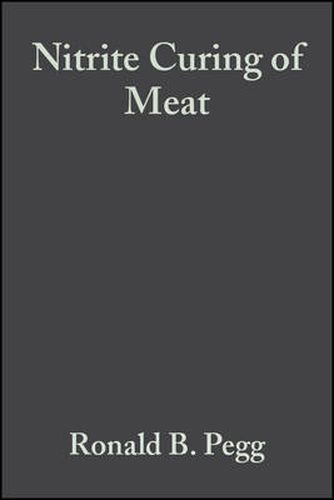Readings Newsletter
Become a Readings Member to make your shopping experience even easier.
Sign in or sign up for free!
You’re not far away from qualifying for FREE standard shipping within Australia
You’ve qualified for FREE standard shipping within Australia
The cart is loading…






Meat has been treated for centuries with rock salt as a means of preservation. However, only one century has passed since the German researchers, Polenske in 1891, Kisshalt in 1899, and Lehmann in 1899, discovered that the active component in the curing process was nitrite. Soon after the role of nitrite as a meat curing agent was revealed, government regulators placed guidelines on the level of nitrite and nitrate permitted for use in cured meat formulations. In the late 1960s and early 1970s, the development of the so-called ‘nitrite problem’ surfaced because of the detection of N-nitrosamines in processed meats.A major technical advance in the analytical technique for N-nitrosamine detection was achieved when Thermo Electron of Waltham, Massachusetts introduced the thermal energy analyzer (TEA). This unit allowed the screening of a large number of samples for nitrosamine with only a minimum preparation. The role of nitrite in revealing the desired and unique flavor of cured products, perhaps by suppressing the formation of lipid oxidation products was another development in revealing other properties of nitrite. Above all, the antimicrobial role of nitrite, together with salt, had a major influence on the popularity of nitrite/nitrate in food preservation. This book provides a review of the desirable attributes which sodium nitrite confers to meat during processing, as well as drawbacks of nitrite usage, i.e., the presence of N-nitrosoamines. In addition, solutions for the curing of meat without the use of nitrite are presented.
$9.00 standard shipping within Australia
FREE standard shipping within Australia for orders over $100.00
Express & International shipping calculated at checkout
Meat has been treated for centuries with rock salt as a means of preservation. However, only one century has passed since the German researchers, Polenske in 1891, Kisshalt in 1899, and Lehmann in 1899, discovered that the active component in the curing process was nitrite. Soon after the role of nitrite as a meat curing agent was revealed, government regulators placed guidelines on the level of nitrite and nitrate permitted for use in cured meat formulations. In the late 1960s and early 1970s, the development of the so-called ‘nitrite problem’ surfaced because of the detection of N-nitrosamines in processed meats.A major technical advance in the analytical technique for N-nitrosamine detection was achieved when Thermo Electron of Waltham, Massachusetts introduced the thermal energy analyzer (TEA). This unit allowed the screening of a large number of samples for nitrosamine with only a minimum preparation. The role of nitrite in revealing the desired and unique flavor of cured products, perhaps by suppressing the formation of lipid oxidation products was another development in revealing other properties of nitrite. Above all, the antimicrobial role of nitrite, together with salt, had a major influence on the popularity of nitrite/nitrate in food preservation. This book provides a review of the desirable attributes which sodium nitrite confers to meat during processing, as well as drawbacks of nitrite usage, i.e., the presence of N-nitrosoamines. In addition, solutions for the curing of meat without the use of nitrite are presented.